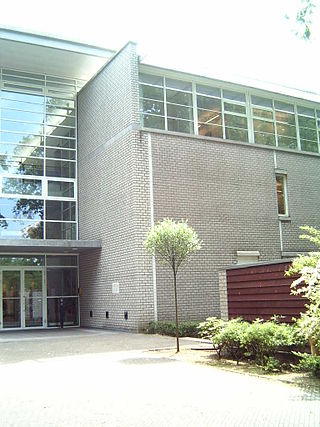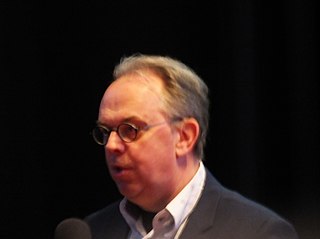Related Research Articles
Second-language acquisition (SLA), sometimes called second-language learning — otherwise referred to as L2acquisition, is the process by which people learn a second language. Second-language acquisition is also the scientific discipline devoted to studying that process. The field of second-language acquisition is regarded by some but not everybody as a sub-discipline of applied linguistics but also receives research attention from a variety of other disciplines, such as psychology and education.
An interlanguage is an idiolect which has been developed by a learner of a second language (L2) which preserves some features of their first language (L1) and can overgeneralize some L2 writing and speaking rules. These two characteristics give an interlanguage its unique linguistic organization. It is idiosyncratically based on the learner's experiences with L2. An interlanguage can fossilize, or cease developing, in any of its developmental stages. It is claimed that several factors shape interlanguage rules, including L1 transfer, previous learning strategies, strategies of L2 acquisition, L2 communication strategies, and the overgeneralization of L2 language patterns.
Language attrition is the process of decreasing proficiency in or losing a language. For first or native language attrition, this process is generally caused by both isolation from speakers of the first language ("L1") and the acquisition and use of a second language ("L2"), which interferes with the correct production and comprehension of the first. Such interference from a second language is likely experienced to some extent by all bilinguals, but is most evident among speakers for whom a language other than their first has started to play an important, if not dominant, role in everyday life; these speakers are more likely to experience language attrition. It is common among immigrants that travel to countries where languages foreign to them are used. Second language attrition can occur from poor learning, practice, and retention of the language after time has passed from learning. This often occurs with bilingual speakers who do not frequently engage with their L2.
The generative approach to second language (L2) acquisition (SLA) is a cognitive based theory of SLA that applies theoretical insights developed from within generative linguistics to investigate how second languages and dialects are acquired and lost by individuals learning naturalistically or with formal instruction in foreign, second language and lingua franca settings. Central to generative linguistics is the concept of Universal Grammar (UG), a part of an innate, biologically endowed language faculty which refers to knowledge alleged to be common to all human languages. UG includes both invariant principles as well as parameters that allow for variation which place limitations on the form and operations of grammar. Subsequently, research within the Generative Second-Language Acquisition (GenSLA) tradition describes and explains SLA by probing the interplay between Universal Grammar, knowledge of one's native language and input from the target language. Research is conducted in syntax, phonology, morphology, phonetics, semantics, and has some relevant applications to pragmatics.
The critical period hypothesis or sensitive period hypothesis claims that there is an ideal time window of brain development to acquire language in a linguistically rich environment, after which further language acquisition becomes much more difficult and effortful. It is the subject of a long-standing debate in linguistics and language acquisition over the extent to which the ability to acquire language is biologically linked to age. The critical period hypothesis was first proposed by Montreal neurologist Wilder Penfield and co-author Lamar Roberts in their 1959 book Speech and Brain Mechanisms, and was popularized by Eric Lenneberg in 1967 with Biological Foundations of Language.

The Max Planck Institute for Psycholinguistics is a research institute situated on the campus of Radboud University Nijmegen located in Nijmegen, Gelderland, the Netherlands. The institute was founded in 1980 by Pim Levelt, and is unique for being entirely dedicated to psycholinguistics, and is also one of the few institutes of the Max Planck Society to be located outside Germany. The Nijmegen-based institute currently occupies 2nd position in the Ranking Web of World Research Centers among all Max Planck institutes. It currently employs about 235 people.
Processability theory is a theory of second language acquisition developed by Manfred Pienemann. The theory has been used as a framework by scientists from Europe, North America, Asia and Australia.
Martha Young-Scholten is a linguist specialising in the phonology and syntax of second language acquisition (SLA).
Crosslinguistic influence (CLI) refers to the different ways in which one language can affect another within an individual speaker. It typically involves two languages that can affect one another in a bilingual speaker. An example of CLI is the influence of Korean on a Korean native speaker who is learning Japanese or French. Less typically, it could also refer to an interaction between different dialects in the mind of a monolingual speaker. CLI can be observed across subsystems of languages including pragmatics, semantics, syntax, morphology, phonology, phonetics, and orthography. Discussed further in this article are particular subcategories of CLI—transfer, attrition, the complementarity principle, and additional theories.
Anne Vainikka was a Finnish-American linguist specialising in the syntax of Finnish and in the syntax of second language acquisition (SLA).
The order of acquisition is a concept in language acquisition describing the specific order in which all language learners acquire the grammatical features of their first language. This concept is based on the observation that all children acquire their first language in a fixed, universal order, regardless of the specific grammatical structure of the language they learn. Linguistic research has largely confirmed that this phenomenon is true for first-language learners; order of acquisition for second-language learners is much less consistent. It is not clear why the order differs for second-language learners, though current research suggests this variability may stem from first-language interference or general cognitive interference from nonlinguistic mental faculties.
Multi-competence is a concept in second language acquisition formulated by Vivian Cook that refers to the knowledge of more than one language in one person's mind. From the multicompetence perspective, the different languages a person speaks are seen as one connected system, rather than each language being a separate system. People who speak a second language are seen as unique multilingual individuals, rather than people who have merely attached another language to their repertoire.

Cornelis Kees de Bot is a Dutch linguist. He is currently the chair of applied linguistics at the University of Groningen, Netherlands, and at the University of Pannonia. He is known for his work on second language development and the use of dynamical systems theory to study second language development.

Mandana Seyfeddinipur is a linguist, author, and educator. She is also the Head of the Endangered Languages Archive.
Soonja Choi (Korean: 최순자) is an Austria-based linguist from South Korea. She specializes in language acquisition, semantics, and the linguistics of Korean.
Shanley E. M. Allen is a professor of linguistics working at the Technical University of Kaiserslautern. Her research is primarily in the area of psycholinguistics and language acquisition, studying both monolingual and multilingual speakers. She is also a specialist on the Inuktitut language.
Aslı Özyürek is a linguist, cognitive scientist and psychologist. She is professor at the Center for Language Sciences and the Donders Institute for Brain, Cognition and Behaviour at Radboud University Nijmegen, and incoming Director of the Multimodal Language Department of the Max Planck Institute for Psycholinguistics.
Mirjam Ernestus is professor of psycholinguistics and scientific director of the Centre for Language Studies at Radboud University Nijmegen in the Netherlands.

Anna Giacalone Ramat, born Anna Giacalone in Forlì, Italy, 17 June 1937, is an Italian linguist known for her work on grammaticalization and language acquisition.

Peter Hagoort is a Dutch neuroscientist who studies the neurobiology of language.
References
- 1 2 3 4 "Marianne Gullberg". Academia Europaea. Retrieved 15 October 2023.
- 1 2 3 4 "Our unconscious gestures speak volumes". Knut and Alice Wallenberg Foundation. Retrieved 22 October 2023.
- ↑ "Marianne Gullberg elected member of the Royal Swedish Academy of Sciences!". Lund University Humanities Lab. Retrieved 22 October 2023.
- ↑ "Marianne Gullberg". Royal Swedish Academy of Sciences. Retrieved 22 October 2023.
- ↑ "Professor Marianne Gullberg mottog pris vid högtidssammankomst". mynewsdesk.com (in Swedish). 29 March 2019. Retrieved 22 October 2023.
- ↑ "Distinguished Scholar Award 2019: Marianne Gullberg". EuroSLA. 14 May 2019. Retrieved 22 October 2023.